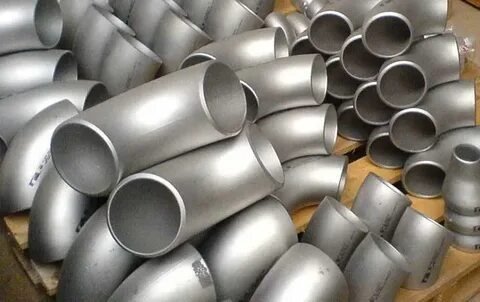When it comes to industrial piping systems, choosing the right fittings is just as important as selecting the pipes themselves. Among the many options available, Stainless Steel 304 Pipe Fittings stand out for their durability, corrosion resistance, and versatility. Whether you are working on a construction project, a chemical plant, a food processing unit, or a plumbing system, SS 304 Pipe Fittings can provide the perfect balance of strength and reliability.
But how do you select the right Stainless Steel 304 Pipe Fittings for your specific needs? This guide will walk you through everything — from understanding material properties to choosing fitting types, sizing, standards, and maintenance.
Understanding Stainless Steel 304 Pipe Fittings
Before diving into selection criteria, let’s understand what SS 304 Pipe Fittings are and why they are so widely used.
Stainless Steel 304 is an austenitic chromium-nickel alloy that offers excellent corrosion resistance, high tensile strength, and the ability to withstand extreme temperatures. It contains 18% chromium and 8% nickel, which gives it its iconic “18/8” designation.
SS 304 Pipe Fittings are components used to connect, control, or change the direction of stainless steel pipes. These fittings are used in industries like:
-
Oil and gas
-
Food and beverage
-
Water treatment
-
Pharmaceuticals
-
Petrochemicals
-
Marine engineering
Why SS 304?
-
Corrosion Resistance – Ideal for humid, acidic, or saline environments.
-
High Durability – Withstands high pressure and temperature.
-
Hygienic Properties – Non-reactive and easy to clean, making it perfect for sanitary applications.
Why the Right Selection Matters
Using the wrong fitting can cause:
-
Leakages
-
Pressure loss
-
Contamination (in food or pharma applications)
-
Premature failure of the pipeline
-
Increased maintenance and replacement costs
The correct choice ensures optimal performance, safety, and cost-efficiency.
Key Factors to Consider When Selecting SS 304 Pipe Fittings
1 Determine Your Application Needs
Ask yourself:
-
What medium will flow through the pipe? (Water, chemicals, gases, food-grade fluids, etc.)
-
What is the operating pressure?
-
What is the temperature range?
-
Will the system be indoors or outdoors?
For example: Food-grade applications require sanitary SS 304 fittings with polished surfaces, while high-pressure industrial systems may need thick-walled fittings.
2 Choose the Right Fitting Type
Common types of Stainless Steel 304 Pipe Fittings include:
| Fitting Type | Function |
|---|---|
| Elbows | Change pipe direction (90° or 45° angles) |
| Tees | Split or combine flow in a system |
| Reducers | Connect pipes of different diameters |
| Couplings | Join two straight pipes |
| Caps | Seal pipe ends |
| Unions | Allow easy disconnection |
| Crosses | Connect four pipes |
| Stub Ends | Used with lap joint flanges |
| Adapters | Convert different connection types |
Choosing the wrong type could cause flow inefficiency or mechanical stress.
3 Selecting the Correct Size
Pipe fitting size is NOT just about the diameter — it also involves wall thickness (schedule), length, and tolerances.
-
Nominal Pipe Size (NPS) – Defines the diameter
-
Schedule (SCH) – Defines wall thickness (e.g., SCH 10, SCH 40, SCH 80)
-
Inside Diameter (ID) vs Outside Diameter (OD) – Both matter in determining the fit
Pro Tip: Always match fittings to the pipe schedule to maintain consistent flow and pressure ratings.
4 Standards and Certifications
When selecting SS 304 Pipe Fittings, check for international standards compliance:
-
ASTM A403 – Standard for stainless steel wrought fittings
-
ASME B16.9 / B16.11 – Dimensions and tolerances for butt-weld and forged fittings
-
ISO & DIN standards – Global compliance
Certified fittings ensure reliability, safety, and global compatibility.
5 End Connections
The connection type is crucial for assembly and maintenance:
-
Butt-Weld – Permanent, strong, for high-pressure systems
-
Socket Weld – Semi-permanent, easier installation
-
Threaded – Reusable, easy to assemble/disassemble
-
Flanged – Ideal for maintenance-heavy systems
Choose based on whether your system needs frequent disassembly.
6 Budget vs. Quality
While SS 304 Pipe Fittings may have a higher initial cost than carbon steel or plastic fittings, their long-term durability, low maintenance, and resistance to corrosion often make them the more cost-effective choice.
Conclusion
Selecting the right SS 304 Pipe Fittings is a balance of understanding your system’s requirements, knowing the available options, and ensuring compliance with standards. By considering application, fitting type, size, connection method, and environment, you can make an informed decision that ensures safety, efficiency, and longevity.
